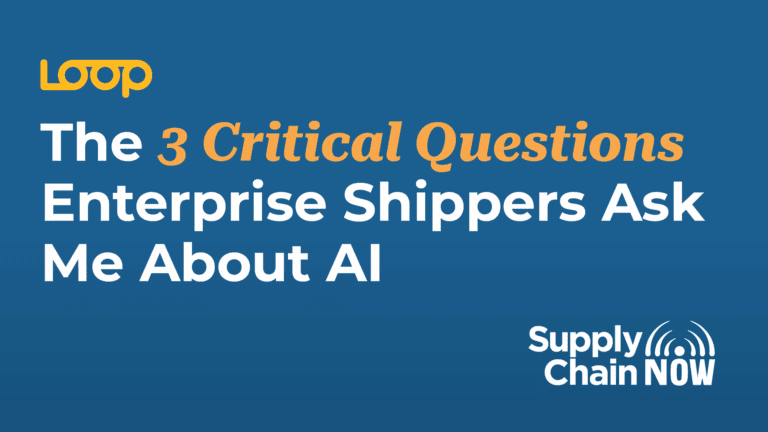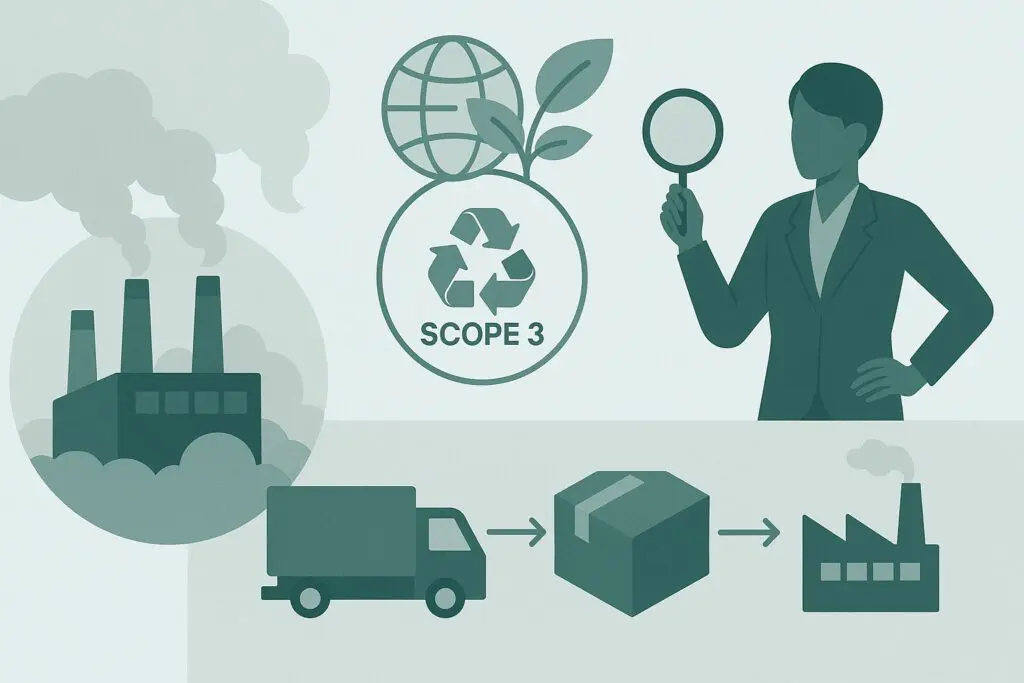
The 3 Critical Questions Enterprise Shippers Ask Me About AI
Special Guest Blog Post written by Matt McKinney, Co-Founder and CEO of Loop
I spend most of my time with supply chain and innovation leaders at major enterprises who are sitting on significant AI budgets but struggling to show measurable business impact in an increasingly complex and volatile supply chain environment.
These conversations have evolved dramatically. A year ago, executives were asking basic questions about AI feasibility. Today, the questions have shifted to strategic implementation at enterprise scale.
Based on hundreds of these discussions, three questions consistently emerge that separate companies making transformational progress from those stuck in pilot purgatory.
- How do we move from AI experiments to enterprise-scale impact?
Most organizations have yet to see organization-wide, bottom-line impact from AI use. This is the strategic challenge keeping C-suite leaders awake at night.
The problem isn’t the technology. It’s the application of the technology. Too many enterprises are trying to treat AI like a magic wand they can bolt onto existing systems. But garbage in, garbage out. If your underlying data is fragmented and inconsistent, AI won’t solve your problems; in fact they’ll get worse.
At its core, anything automated is powered by data. You have to start with AI solutions that solve the core data problems first. This means finding design partners that specialize in data centralization, especially for messy and unstructured data pulled from any source (systems, emails, PDFs, CSVs, feeds, etc.)
The key distinction is between AI that requires clean data as input versus AI that can make sense of unstructured information without requiring you to clean it first. The latter is what enables enterprise-scale impact because it solves your existing data mess rather than perpetuating it.
Once you establish that data foundation, you unlock process automation and create opportunities to solve use cases that sit on top of that data.
- What’s the fastest path to measurable ROI while building toward bigger ambitions?
Start where the worst data problems exist in your organization. Where are teams unable to scale effectively? Where’s the lack of repeatability and endless manual work?
Transportation data is a perfect example. You’re dealing with third-party data from carriers, pulling information from multiple platforms, documents, feeds, and emails to create a single source of truth. Because transportation isn’t purchase order-based, you also face cost allocation challenges on top of data complexity.
This core data problem principle applies everywhere: legal teams drowning in contract reviews, procurement teams manually processing vendor agreements, finance teams struggling with cost allocations across business units. Solving the ugliest, most manual processes in your organization first makes everything else exponentially easier.
Once you prove success in one area, that same reasoning engine can be applied to adjacent use cases. The technology that learns to understand transportation contracts can analyze procurement agreements, legal documents, and other unstructured data across your enterprise.
- How do we scale AI across our organization without losing control?
This is where governance becomes critical. Find design partners who understand enterprise complexity and can provide the framework for responsible AI deployment.
You need transparency, traceability, and tools that adapt to your business. Look for partners who can provide:
- Explainability: Clear audit trails showing how decisions were made
- Configurability: AI that can follow your business rules and exceptions
- Oversight: Guardrails that ensure humans stay in the loop when needed
Start with one area as your AI center of excellence. The team that cracks that first deployment becomes your internal center of excellence. They’ll develop the standards, workflows, and trust needed to expand responsibly.
The companies that win with AI don’t treat it as a point solution. They build repeatable frameworks for identifying data problems, validating outcomes, and scaling across the business.
The window for AI-driven competitive advantage is narrow and closing fast. Start where the chaos is loudest. Prove it works. Then scale.
More Blogs

Enabling Procurement Professions to Tackle Scope 3 Emissions

